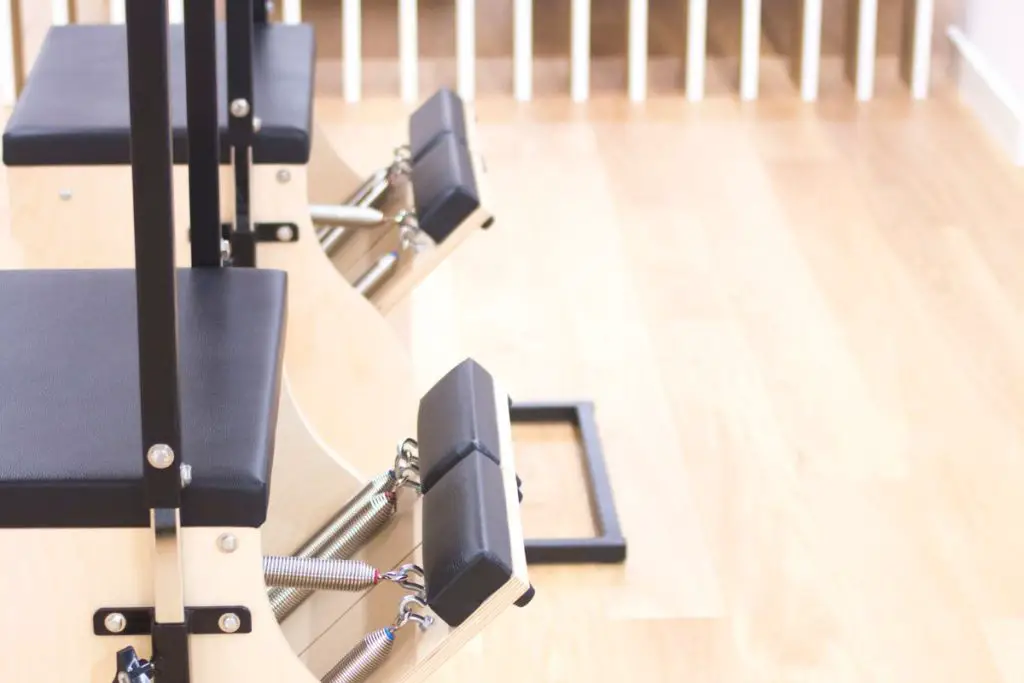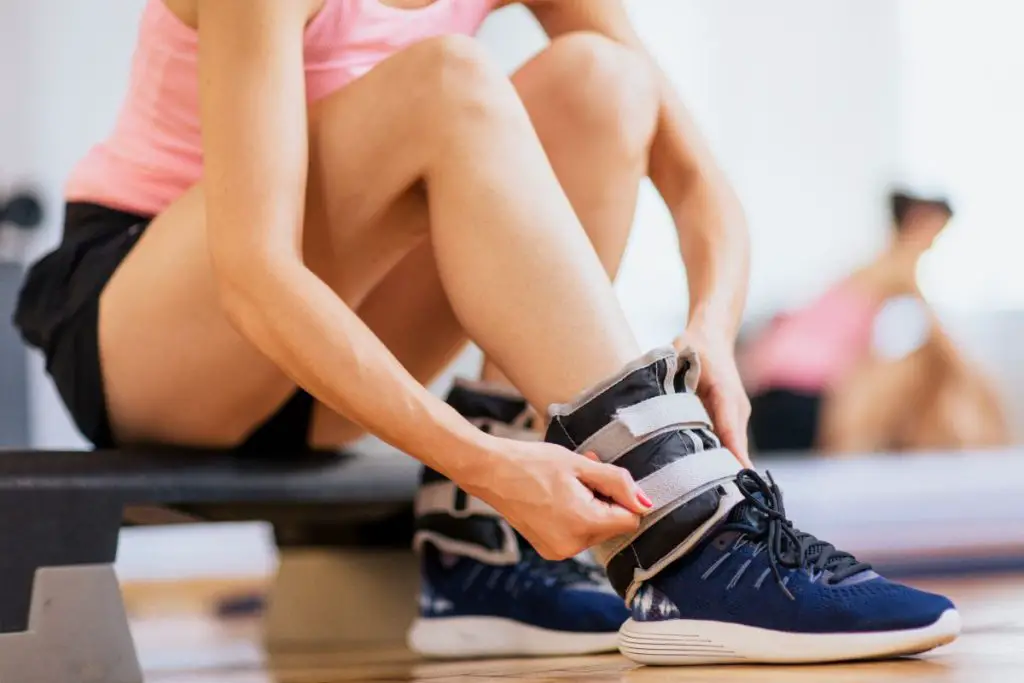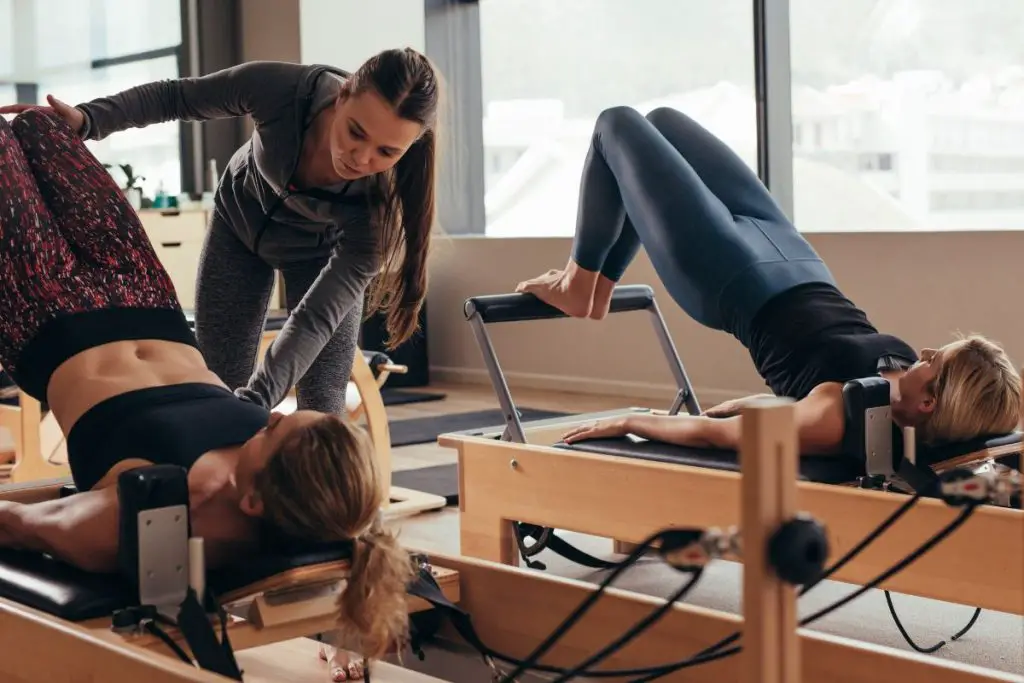Types Of Pilates Equipment (Classes Will Usually Provide)
Pilates is a popular to exercise regularly, and everyone can benefit from it.
In the past, Pilates used to be only reserved for stars and professional athletes but today people of all ages, backgrounds and abilities can do Pilates.
And the good news is that you don’t even need a lot of equipment to practice this gentle workout.
From a Pilates mat to exercise balls, the majority of Pilates gear is often provided by Pilates studios.
In this article, we take a look at some of the most essential equipment that Pilates teachers and classes typically provide.
Pilates Mat
The first thing you’ll need, whether you practice at home or as part of a class, is a Pilates mat.
While many people also use a standard yoga mat for their Pilates exercises, it’s worthwhile working with a specific mat designed for Pilates training.
These mats are thicker and denser than your normal yoga mat. This ensures that your joints, hands and your spine is protected during your workout.
This being said, you can also use your own exercise mat and just cushion it with a towel. Just make sure that you still have a firm grip on the mat and you don’t slip.
Reformer Machine
Reformers machines are typically used for reformer Pilates and some other types of workout.
A reformer helps with a range of different Pilates exercises and poses. Plus, it also means your workout is much more gentle on muscles and joints.
This makes reformer Pilates ideal for anyone with an injury, athletes, pregnant women as well as rehab patients.
You can work with a reformer regardless of your age and abilities. It increases strength, flexibility, balance, coordination as well as posture and muscle tone.
A reformer machine is quite expensive, so this is a piece of Pilates equipment that most people don’t have at home.
However, most well-equipped Pilates studios offer reformer Pilates classes or classes that work with reformer exercises.
In addition, it’s important that you know exactly how to use a reformer machine and a good teacher at a studio can give you a proper introduction and show you how to work with it.
Reformers are suitable for any type of resistance and strength training. The machine uses a spring, straps and ropes to create a resistance which makes exercises more intense.
It’s easy to adjust the spring resistance on the reformer, so it can be adapted to match with your Pilates experience level making it suitable for both beginners and advanced practitioners.
Pilates Chair

A Pilates chair is a greater alternative to the standard reformer. It is much smaller than a reformer machine and takes up a lot less space.
Saying this, they are quite heavy and bulky to carry around, so it is easier not to carry a Pilates chair with you to class.
Plus, even if you don’t own a Pilates chair, many studios and classes provide a chair as standard if teachers work with it in an exercise.
There are Pilates chairs in a range of different styles and sizes, but they fundamentally work in the same way.
You can use a Pilates chair as you would a reformer machine.
The chair has handles, springs as well as petals which can be used to create resistance making your workout more intense.
The Pilates chair has a long history in Pilates as already the founder of this workout used a chair to intensify his exercises.
Pilates Ring / Magic Circle
The Pilates ring, or better known as Magic ring in Pilates, is a small but important piece of equipment that has been designed by Joseph Pilates.
This basic ring helps to add resistance and it improves your body’s balance.
A standard Magic ring has two padded handles that you use to grip tightly with your ankles, palms, thighs or another part of your body.
Pilates rings are standard equipment provided in Pilates studios because they are so essential for strengthening and toning the arms, chest, legs, pelvic floor and thighs.
Thanks to the padding, you can either squeeze or push the handles with a part of your body, and this allows you to work on different muscle groups.
The Pilates ring is used in mat Pilates, classic Pilates as well as a number of other Pilates types.
As a Magic ring is extremely lightweight, portable and relatively inexpensive, it is often a piece of equipment that many Pilates practitioners have at home, and also bring along to class.
Saying this, many studios have a number of Pilates rings available during their classes. Just check with your local studio what equipment they offer.
Resistance Bands
Similar to a Pilates ring, a resistance band is equally lightweight and it’s an easy thing to buy for your home studio, although many Pilates classes also offer resistance bands for exercises.
Resistance bands come in a wide variety of difficulties, sizes and materials which means you would need quite a few different options for your home studio.
These elastic latex bands work in a similar way to all the other Pilates workout gear. They create resistance, so your muscles have to work harder.
Just like with a Magic ring, you can train different body parts, including thighs, upper body, core and glutes.
As a resistance band doesn’t have a fixed shape, you are flexible to use it in any ways you like.
Ankle And Wrist Weights

A little different to the reformer, Pilates ring and resistance bands is working with Pilates weights.
These wearable weights can be attached to your wrists or ankles and they create resistance to strengthen your muscles.
They are easy to attach and they are surprisingly effective as well. Wearable wrist and ankle weights can be used in almost any Pilates exercise making it more challenging.
You can vary the weight depending on your experience level, so you can go as light or heavy with your training as you like.
There are expert-level weights and beginner-friendly weights. Many Pilates studios offer both weights but this depends on the type of classes they provide.
Although these weights are easy to carry as they aren’t too big, it’s a lot less hassle to use the weights at the studio.
Pilates Ball
Pilates balls are another great way to add a little variety to your Pilates workout. There are a range of different sizes and types, such as a mini Pilates ball or the Swiss ball.
The Swiss ball is particularly popular because it is often used as part of movement exercises working on multiples parts of the body.
Another type of Pilates ball is the overball which is a small ball with a soft texture. It’s similar to a Pilates ring and foam roller.
You can use these mini Pilates balls between your legs, knees or ankles to provide more balance during stability exercises.
They are also perfect for activating different muscles groups and creating resistance.
Final Thoughts
There is plenty of different equipment that Pilates studio offer as part of your workout, from larger reformer machines to small Pilates balls
It’s a good idea to check with your studio what equipment your chosen class uses and what the studio provides.





